Pictured Above: Roger and Laura Vajgrt own Home Rental Center & Sales, Marshalltown, Iowa. Vajgrt’s success strategies for rental include offering a variety of equipment, regularly adding new equipment and carrying recognizable brands.
The equipment rental industry is growing. Revenues are projected to increase 7.3% in 2013, 9.4% in 2014 and 12.9% in 2015, according to the American Rental Assn. (ARA).
“Dealers should see rental as a growth opportunity,” says Tom Hubbell, ARA’s vice president of marketing and communications. “The financial crunch a few years ago had folks saying, ‘I don’t want to own things. I don’t want the capital on my books.’ Ultimately, there has been a shift toward renting as a way of doing business as opposed to just renting for a specific task.”
In addition to more business owners such as landscapers and contractors choosing rental, rural lifestylers like the ability to rent equipment for special projects. Hubbell says rental can be a natural business add-on for equipment dealers.
“The good thing is that dealers already have the equipment, the people to maintain the equipment and the facilities to be in the equipment rental business,” Hubbell says.
Know Your Market
Roger Vajgrt, owner of Home Rental Center & Sales, Marshalltown, Iowa, started in the rental business in the 1980s. His father was a homebuilder and they would rent some of their tools and ladders. Two rental stores existed at that time in his town of 30,000 and one was going out of business. People in the community started talking about whether Vajgrt and his father would use this opportunity to expand their rental offerings.
“I was just going to go pick up a few things and someone told me about the rumor that ‘Vajgrt was going to start a rental store.’ I talked it over with my father and said, ‘Let’s do it.’” He opened for business on January 1, 1985.
Dealer Takeaways
• Build your rental inventory based on market needs and dealership strengths.
• Establish sound legal contracts, rental procedures and a way to monitor performance.
• Check your insurance policy to see if it covers rental equipment or purchase separate rental insurance.
Today, rental accounts for about 80% of his revenues, with about 30% coming from the lawn and garden market, 60% from the industrial commercial market and 10% from rentals of event equipment and supplies. He also sells and services Dixon, Kawasaki, Stihl, Toro and Honda equipment and Kohler and Briggs & Stratton engines.
Vajgrt says knowing his market is one of the major reasons for his rental success.
“I was born and raised here. I watch trends. I monitor phone calls to see what people are asking for,” Vajgrt says. He pays attention to businesses that are opening and may need equipment to get ready. He even watches “do-it-yourself” television shows to see what kinds of projects might be popular.
“The first strategy for anyone considering rental is to be able to answer the question, ‘What’s the market in my area?’ Talk to your customers to understand their needs, wants and desires,” says Hubbell.
He suggests using the website www.rentalhq.com. The site allows renters to enter the kind of equipment they’re looking for and their location. Dealers can use it to understand the competition in their area. ARA also just released its Equipment Rental Penetration Index via its Rental Market Monitor. The tool is available to members and helps companies measure the rental potential in their area.
Sell to Your Strengths
Dealers face tough competition from rental-only stores, both those that are independently owned and nationwide chains. To compete, dealers need to understand and market their dealerships’ strengths.
“Understand what you’re good at. Be committed to what you’re good at. Don’t try to be all things rental,” says Heath Watton, manager of Southeastern Equipment’s Cambridge, Ohio, location.
Proper Rental
Insurance Protects Dealership
Liability and property damage are two major concerns with a rental business. The proper insurance can reduce those risks and protect your business, says Alastair Jones, vice president of sales and marketing for ARA Insurance Services, a company of the American Rental Assn.

Alastair Jones is VP of sales and marketing for ARA Insurance Services.
“When you rent equipment, you don’t really know how customers are going to use it. Equipment could potentially be deadly,” says Jones.
He says the insurance carried by dealerships may not explicitly exclude rental, but often the use of the equipment off-site by someone other than an employee has not been figured into the rate and coverage.
“If there’s a claim, the insurance company could decline the claim. Or, they could pay the claim, but potentially cancel your policy.”
Jones advises dealers follow these steps when considering adding a rental division.
1. Notify your insurance company about adding rental or any change in business operations. Based on the feedback, pursue additional insurance coverage to include equipment that may be rented.
2. Make sure your rental contracts have been reviewed by a lawyer who is familiar with the state’s laws.
3. Talk with an expert or trusted dealer about damage waivers. A damage waiver is a fee the customer pays at the time of rental that may limit their responsibility to pay for damaged equipment. Waivers are added to a fund, which the dealer uses for rental equipment repairs.
Those dealers renting to contractors have another insurance option. A contractor’s business insurance may cover rental equipment. Dealers can request a copy of that insurance certificate and include it as part of the rental contract.
Jones offers one other bit of business advice. Talk with your lawyer or accountant if you’re considering adding a rental division. They may suggest setting up a limited liability corporation or other legal arrangement to protect your equipment business.
Check out this resource of insurance terms to help you better understand your policies, http://www.ararental.org/ARAInsurance/InsuranceGlossary.aspx.
Southeastern Equipment has been renting equipment since it started business in 1957 and the company now has 18 locations in Ohio, Indiana, Kentucky and Michigan. It says it is the largest privately owned Case Construction dealer in the world and its main customer segments include residential and commercial construction companies, utility contractors, landscapers, farmers and municipalities. Its main rental lines include Case Construction, Kobelco, Terex, Bomag and JLG.
Watton says they don’t cross over into the homeowner base for rental, especially because the larger equipment they rent requires operator knowledge and experience.
“I refer homeowner business to the smaller rental houses. It doesn’t make sense for us and I would rather turn it away,” Watton says.
Kyle Kresse, who does inside sales for Farmers Implement, says his company has been offering rental equipment since the 1990s. However, it’s a very small part of the business, maybe 1% of revenues. Rental used to provide a larger share when homebuilding was at its height in the nearby metro area of Milwaukee. This Case dealership has locations in Allenton and Columbus, Wis.
They still rent to some contractors as well as farmers and rural lifestylers. Rental equipment includes Case IH compact tractors and attachments, Gehl skid and track loaders, CEAttachments and Lowe Manufacturing augers, auger bits, grapple buckets and trenchers.
“We offer rental as more of a convenience to our customers,” Kresse says. “It helps out with our customer relationships. Customers appreciate having a wide variety of attachments to use when they need it. It helps them get those projects done that they may only do once a year, so they can’t justify buying a piece of equipment like an auger or concrete breaker. They can come down here and pick it up and get the job done.”
Vajgrt of Home Rental says variety is what helps him win customers. He has more than 1,200 categories of items to rent. Construction equipment includes asphalt and concrete equipment, excavators, skid steers, tractors and attachments and trenchers. Do-it-yourself equipment includes aerators, augers, blowers, chipper/shredders, snow removal equipment, stump grinders and more. Party rental includes audio/visual equipment, food preparation equipment and tent accessories. He even rents animal traps, extension cords and costumes.
Vajgrt says customers feel more comfortable renting recognizable brands so he carries high-profile equipment such as Bobcat, Kubota, Toro, Vermeer and Woods Equipment.
“Name recognition is absolutely huge. I’ve bought ‘off-breed’ equipment in the past and customers tended to shy away from it,” Vajgrt says.
He goes to the ARA “The Rental Show” each year to look for new items and also serves as region 6 director for the association. “This is a do-not-miss in our industry. You will see anything and everything. Last year, there were 66 first-time exhibitors. That’s 66 brand new opportunities to add something to my business.”
One of his latest additions was scaffolding, which he says was rented the day it was added to his inventory. He added more scaffolding, which rented the next week and is out for weeks at a time.
“I’m an equipment junkie. I like things that are different. Years ago we started renting dump trailers. People have driven 50 miles to rent those trailers. We also rent an electric excavator. We’ve been in six states with that.”
Grow Equipment Sales
Rental can be a lead-in to sales.
“You have the opportunity not only to rent equipment but to sell ancillary goods, such as safety gloves and glasses,” says Hubbell of ARA.
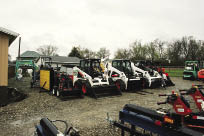
Home Rental Center & Sales, Marshalltown, Iowa, offers more than 1,200 categories of rental equipment and items for construction, home repair and special events.
Watton of Southeastern Equipment says about 70% of its equipment inventory that’s for sale is available for rental. “It’s a fantastic way for the end user to pay for a demo, and it’s a fantastic way for people to see what your company is all about. We wouldn’t hesitate to put something in our rental fleet to fill the need of a good customer.”
Farmers Implement offers a purchase incentive to landscaping companies that rent snow removal equipment.
“Landscapers can rent a skid loader for 6 months at a set dollar amount and then 85% of that rental price could go toward a purchase at the end of the season. It definitely boosts sales in the spring,” Kresse says.
When a propane supplier in his area went out of business, Vajgrt added a propane filling station as part of his rental offerings.
“The original station was for filling bottles, 20-pound barbecue cylinders, 100-pound cylinders for construction equipment and 33-pound forklift cylinders. We got phone calls from motor home owners and added a filling station that was accessible to these customers,” Vajgrt says. “We sell propane every day.”
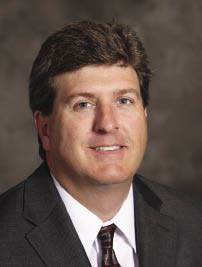
Tom Hubbell is vice president of marketing and communications for the American Rental Assn. Marketing Rental
Marketing strategies vary based on the dealership’s emphasis on rental. Watton of Southeastern Equipment says they include rental on the website and in company mailers, but mainly rely on their salespeople.
“We do a lot of it face-to-face. With our 60-year history, people know about us. Our following has been established,” Watton says.
Vajgrt does a variety of advertising and says radio and TV have worked well. They run humorous radio spots featuring him or his wife, Laura, which generate attention.
“The best thing we do is run stark-white trucks that have ‘Home Rental Center’ in big red letters. They are our portable billboards.”
The dealership’s website name also promotes its rental business: www.needitrentit.net.
Processes Protect Your Business
Dealers say success in the rental business is as much about processes as it is about inventory. First step, consult with a lawyer or rental expert to draw up the contract. Hubbell says ARA members can access sample contracts from the association. “You have to have a strong contract no matter what kind of business you are,” Hubbell says.
Next, establish processes to protect your business, the equipment and the customer. “We take a lot of pride in our machines and we want them to be in tip-top, A1 condition when it leaves. Because we generate so many sales from the equipment, we want to make sure it comes back in good condition,” Watton says.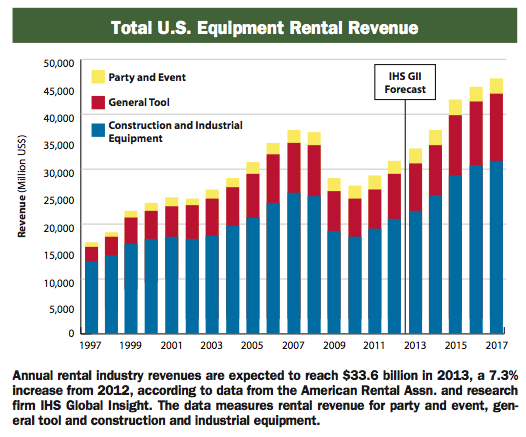
They take photos of equipment before it leaves. “We don’t nitpick, though. A little scratch is going to happen.”
For damage outside of normal operations, they repair the equipment and send the bill to the customer.
Kresse says, “We check out the machine with the customer when it leaves and when it comes back. It’s important that it leaves clean and in good condition. Customers can either choose to clean it before they return it or we’ll clean it and bill them for the time.”
Having equipment returned clean helps dealers easily identify what needs to be repaired. Vajgrt stresses keeping good service records and making sure every rental leaves with the operator’s manual. Someone at his dealership always operates the machine first to ensure it’s working properly and to help them talk through operation with customers.
Measure Performance
Dealers track rental’s success in various ways. Vajgrt uses software called FocalPoint to track each item.
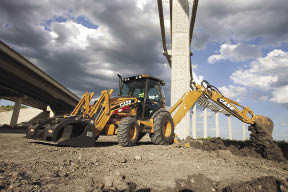
Heath Watton manages Southeastern Equipment’s Cambridge, Ohio, location. The dealership mainly rents construction equipment. Watton says its rental division helps used equipment sales by giving customers a chance to demo the equipment.
“Everything we do from ‘day 1’ is tracked — cost, set-up, rental, delivery, repairs. I can pull up information on that piece of equipment and see what my profitability is to the day,” he says. Vajgrt checks his rental performance quarterly and annually and averages 3 years to get an overall view of profitability.
“You can’t look at it weekly. There is no way, shape or form that I can compare March of last year to March of this year. Last year was so wet that nobody was thinking about dethatching and everybody was just concentrating on trying to get their yards mowed,” he says.
Southeastern tracks rental equipment through its customer management system, NDS. Watton says they do run weekly and quarterly reports to see the kinds of equipment out on rental to identify trends. However, their main focus is to see whether a rental led to an equipment purchase.
“We use our rental fleet to gain and grow our contacts and get customers in the door to buy,” Watton says.
Farmers Implement takes a similar approach in terms of tracking rental through its regular business software, Keystone (Dealer Information System). Because rental is viewed as more of a service than a revenue generator, it mainly tracks what equipment is out on rental and repair costs.
Regardless of the level of tracking, dealers encourage others to see how rental can help a dealership grow. “You have to evaluate it, but it’s definitely something for dealers to look into,” Kresse says.
Watton says, “I think if a dealership in our industry doesn’t have rental, they are really missing the boat.”
Vajgrt is a rental proponent for dealerships, but advises caution. “The rental business can be a profitable business, if done right. It is definitely not something for everyone.”

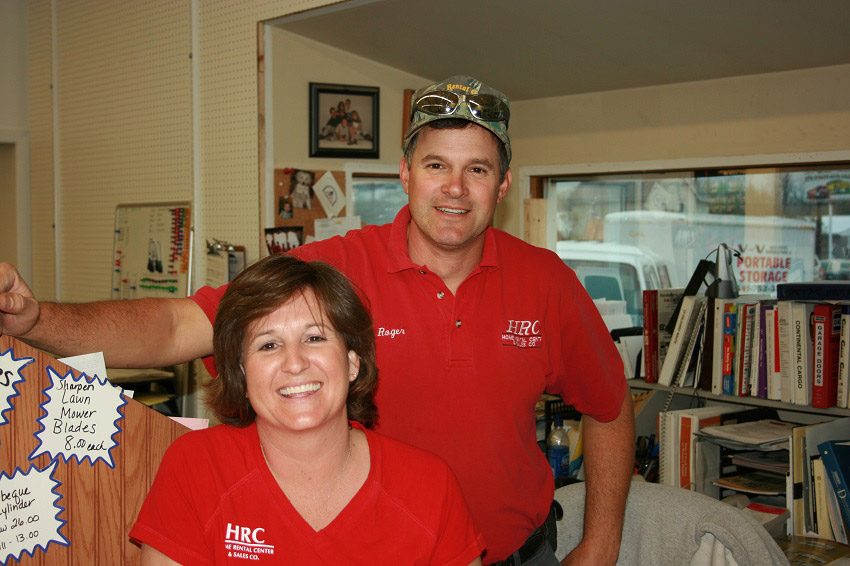




Post a comment
Report Abusive Comment